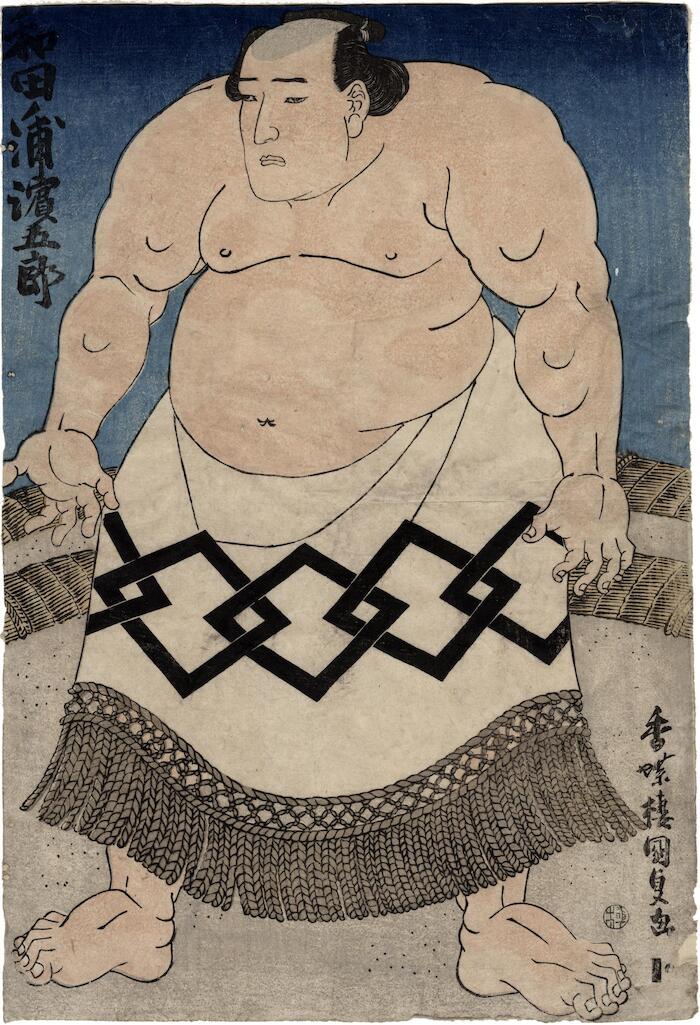Utagawa Kunisada (歌川国貞) / Toyokuni III (三代豊国) (artist 1786 – 01/12/1865)
Sumo Wrestler or rikishi (力士)
1831
10" x 15" Japanese woodblock print
Signed: Kōchōrō Kunisada ga (香蝶楼国貞画)
Publisher: Yamaguchiya Tōbei
(Marks 591 - seal 15-005)
Censor's seal: kiwame
A rikishi (力士) is literally 'a strong man'. In this print the wrestler is wearing a kesho-mawashi (化粧廻し) or ceremonial apron. "The dohyou-iri is a brief ceremony in which rikishi, wearing elaborate kesho-mawashi (ceremonial aprons), are introduced to the audience at the start of each day of a tournament. The kesho-mawashi originates from the days when rikishi were employed by daimyo and would wear the crest of their employer for all to see. Today the expensive kesho-mawashi are gifts from sponsors or fan clubs."
Quoted from: 'Appeasing the gods: Shinto, sumo and 'true' Japanese spirit' by Richard Light and Louise Kinnaird, from With God on their Side: Sport in the Service of Religion, Routlegde, 2017, originally published in 2002, page 143.
****
While we haven't figured out which sumo wrestler this print represents, we do know that the last two characters of his name are 五郎, possibly pronounced 'gorō'. The kanji character shown right before those two may be 濱. Near the top of that column is 田. The problem is linguistical because the reading of Japanese names can be particularly difficult and are often either nonsensical or counterintuitive., combined with this reader's ignorance. But we will keep working on this, because answers are always worth the effort.
sumō (相撲) (genre)
